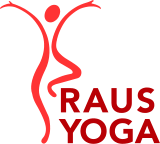Taoistisk yoga, yin/yang
Taoist yoga is a type of yoga which combines the ancient Indian traditions with the Chinese theories of energy maps of the body. It is generally considered to be a modern hybrid of the two systems. This combination is thought to enhance the benefits of yoga as well as provide deeper insights into how the body works. It is said to be appropriate for all people, regardless of their fitness, age or body type.
As well as having close links with traditional yoga, with its stretching, breathing and movement exercises, Taoist yoga is also connected to Tai Chi. It is thought of as a relatively simple system, despite some of the complex exercises integrated from the Hatha yoga and Tai Chi lineages.
One way to think about Taoist yoga is as a way to fully understand the body and the self. It is said to have three main goals:
- To increase the energy circulating in the body
- To become more aware of the body, breath and the mind, and their relationship to each other
- To increase physical flexibility, and ease and depth of breathing
All of these goals mean Taoist yoga is considered an ideal practice for enhancing well-being on all levels.
A Taoist yoga practice may include warmup exercises like Sun Salutations, standing movements, standing meditation, floor exercises, relaxation, mantra and breathing practices. The practice is deliberately flexible to suit the individual yogi.
Taoist yoga was a key influence in the development of Yin yoga by Paul Grilley and other practitioners (around 1990-2000). Yin yoga utilizes the Taoist philosophy of the opposing yet complementary energies of yin and yang in everything. It also works with the Taoist yoga practice of using postures to help the body and mind sit more easily in meditation, which is generally considered to be a yin activity.
Yin/Yang yoga is a practice that balances the slow-paced Yin yoga with the traditional Yang yoga (Ashtanga and Hatha). Yin/Yang yoga has its roots in China in the Taoist concepts of yin — a feminine, passive, cooling energy — and yang — a masculine, dynamic, warming energy
Just as the Taoists believe that yin and yang complement each other and one cannot exist without the other, the Yin/Yang yoga practice uses both types of yoga to provide both physical and spiritual balance.
In Yin yoga, the poses are held for a long period of time — typically three to five minutes or longer — to target the connective tissues, such as the ligaments, rather than focus on the muscles. As a result, the poses are more passive holds with little active engagement of the muscles. A Yin/Yang yoga practice often begins with yin poses.
Developed in India, Yang yoga is what the Western world thinks of as yoga — Hatha and Ashtanga yoga asanas and vinyasas that warm the body and stretch and strengthen the muscles. Yin/Yang yoga typically includes the yang portion of practice in the second half of class.
Yin is part of the Taoist concept of the balanced and harmonized energies in nature, with the other part being yin’s opposite: yang. The characteristics of yin include slow, gentle, female, passive, dark, mysterious, earthy and internal. Yogis may wish to practice Yin yoga in order to harness these particular qualities found in yin’s energy.
In Taoist philosophy, Yin/Yang is the idea that the two energies found in nature come together to form a balanced whole. This concept is mirrored in the opposites of night and day, male and female, and water and fire.
Yin yoga is based on principles from both India’s Hatha yoga and China’s Taoist philosophy and practice. It was established in the Western parts of the world by Paulie Zink in the 1970s.
Yin yoga seeks to cultivate the characteristics of yin energy: night, moon, female, water, among others. It is a slow-paced and gentle form of yoga that is paired with mindful meditation incorporated throughout the practice of the asanas. Yin yoga practitioners seek to nurture silence within the self and interconnectivity of the self with all things.
Yang is a part of the Taoist concept of the balanced and harmonized energies in nature, with the other part being it’s opposite: yin. The characteristics of yang include rapid, energetic, male, assertive, light, obvious, heavenly and external. Yogis may wish to practice Yin/Yang yoga in order to harness or display these particular qualities found in yang’s energy.
Yin/Yang yoga seeks to cultivate or display the characteristics of these energies. Yin/Yang yoga is based on principles from both India’s Hatha yoga and China’s Taoist philosophy and practice.
When Yin/Yang yoga is practiced by incorporating the two energies, it begins with a slow-paced and meditative form of yoga that speeds up with more energetic asanas incorporated throughout the practice. Yin/Yang yoga practitioners seek to nurture balance within and inter-connectivity of the self with all things, hence a practice that incorporates both yin (slow, meditative) and yang (energetic, external).
(kilde: Yogapedia)
